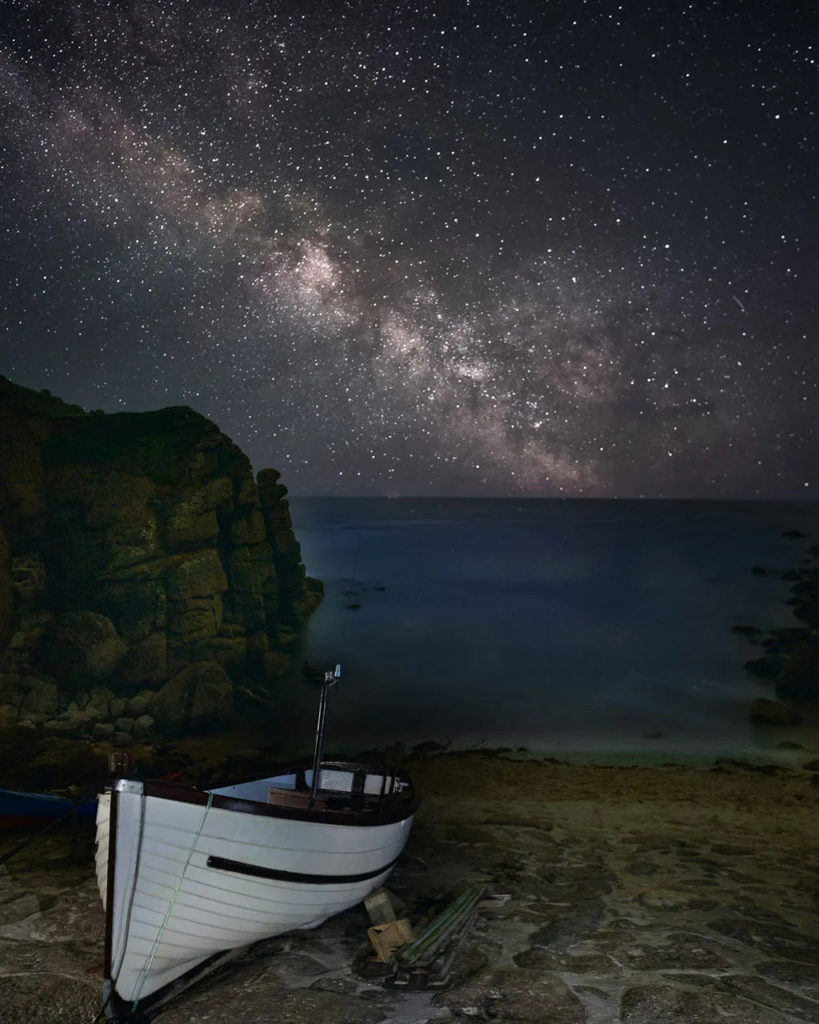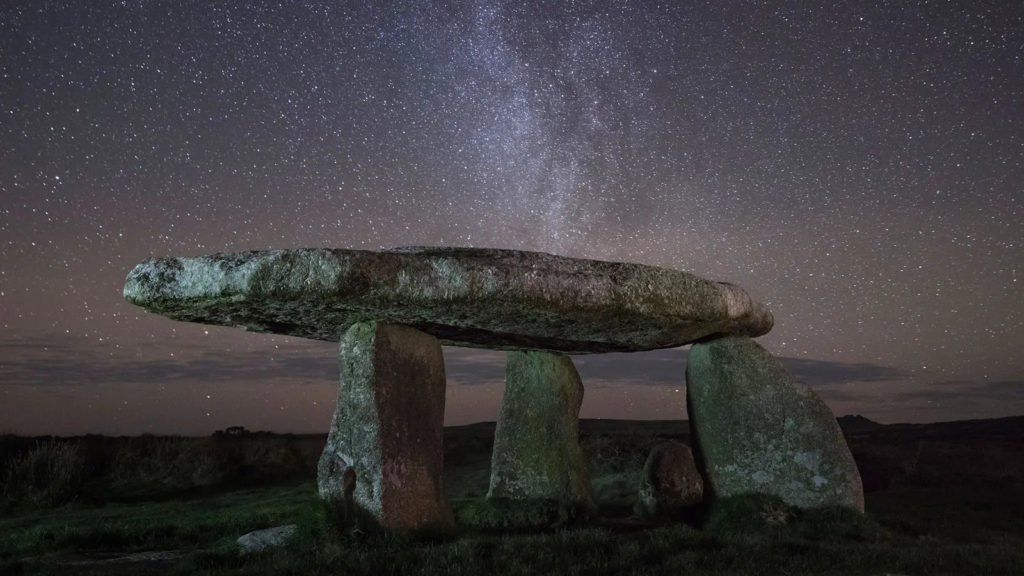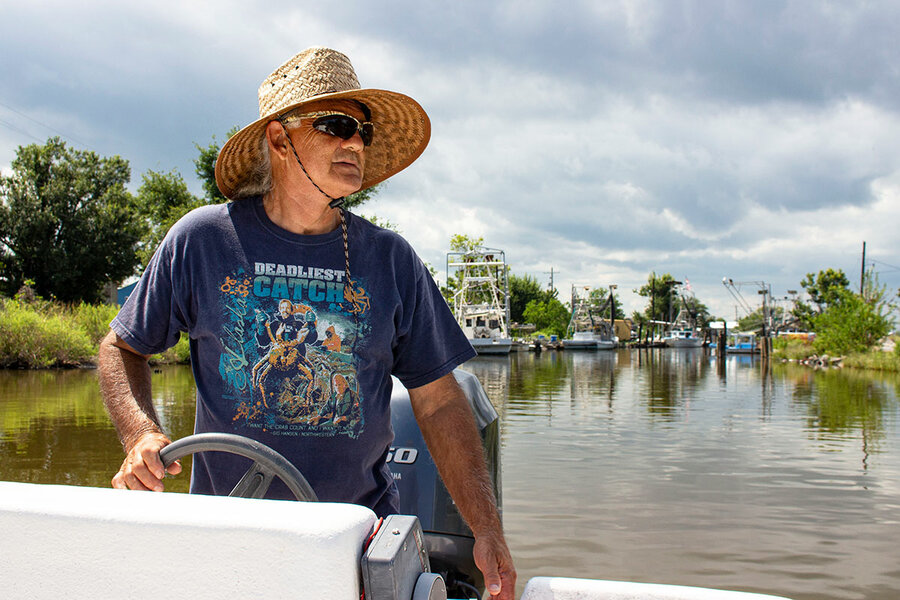Original publication by Frankie Adkins for bbc.com on 15 June 2022
Some 200 places around the world have now achieved Dark Sky status. Frankie Adkins explores the benefits nights without light pollution can bring.

On dark nights when the Moon is hidden and the clouds are at bay, Kevin Hughes sits at the bottom of his garden and gazes up at a velvety black sky. In contrast to his childhood growing up in London amidst the glare of orange sodium-vapour lights, he usually sees hundreds – and, as his eyes adjust, thousands – of stars studding the night sky.
Hughes lives in Cornwall, a peninsula in the southwestern tip of England that juts out into the Atlantic Ocean. His home is in West Penwith, a region renowned for its rugged moors, granite tors and mystic stone circles. Dark skies are a portal to this heritage: “These are the same stars that cavemen in furs and woolly mammoths would look at in the Neolithic [era],” says Hughes.
Although the landscape around them is undergoing change, with new houses, hotels and developments springing up, residents of West Penwith can feel safe in the knowledge that their night skies will likely be protected for generations to come. This is because in December 2021, the region became a Dark Sky Park: an international marker of exceptionally low light pollution.
Globally, light pollution has increased by at least 49% over 25 years
Hughes, a former parish councillor who is standing for town council again in September, had the idea to apply for Dark Sky status in 2013 when an album from one of his pop heroes “flicked a lightbulb” in his mind.
“One of my favourite singers is Enya, and she released an album called Dark Sky Island,” he says. “It’s about Sark in the Channel Islands, which has absolutely no street lighting or cars. All the songs on that album are about navigating by the stars.”
He began researching the International Dark-Sky Association (IDA), a body that recognises and accredits dark-sky areas worldwide.
Founded in Arizona in 1988, the IDA was set up by two astronomers to protect night environments from skyglow – excessive, artificial light directed upwards into the sky.
Globally, light pollution has increased by at least 49% over 25 years. Amidst mounting concern from ecologists and astronomers in the 1980s, the IDA was the first recognised authority in the dark sky movement, and remains the largest today.
Since granting Flagstaff, Arizona, the prestigious title of the very first International Dark Sky Place in 2001, the body has supported applications in 49 countries, from Japan to Hungary. It now counts more than 190 sites in its dark sky program, protecting over 110,000sq km (42,471sq miles) of dark places around the globe, including dark sky reserves, communities, islands and sanctuaries.
The status is seen as a seal of approval which can be used by communities as a basis for further conservation, tourism, education or marketing campaigns. And as the benefits of dark skies, including to human health, wildlife and the environment, become better documented, many rural areas are now seeking IDA recognition. The UK currently has the highest concentration of dark sky areas in the world, triggering a “domino effect” as communities race to conserve the darkness.

(Credit: Chris Colyer)
But proving night skies are pristine – or up to the standard of IDA accreditation – is no easy feat.
It took Hughes and a steering group of parish councillors, amateur astronomers and dedicated residents seven years to achieve dark sky status for West Penwith.
As evidence, the group had to undertake a “sky quality assessment”, which involved submitting light meter readings in the darkest areas of the 135sq km (52sq mile) region.
They launched a community campaign, convincing residents to convert to “dark-sky friendly” lighting – fixtures which are shielded, or angled down, rather than beaming up. Local companies and councils were encouraged to rethink their lighting strategies, for example by turning off floodlights and street lights after certain times.
Our aspiration is to slowly build a whole patchwork of dark areas – Kevin Hughes
The colour of light is critical too. LED lighting – despite its reputation for energy efficiency – often contains high proportions of blue light in its spectrum, which creates a harsh glare. Simply replacing bulbs with narrow-spectrum or low-colour temperature alternatives, can minimise harmful light. Kelvin (K), is the scale used to judge colour temperature, and typically ranges from 2700-5000K. The gold standard is to install lighting with a colour temperature no higher than 3,000K, in keeping with the IDA‘s lighting recommendations.
With these guidelines community campaigners hope to educate rather than enforce: “It’s not about turning off Christmas lights, it’s about changing lights when they go,” says Hughes.
West Penwith followed in the footsteps of nearby areas Bodmin and Exmoor, which have managed to cinch sought-after dark-sky status in the last 11 years. Other regions of Cornwall have shown interest in following suit, creating the potential to carve out a “dark corridor” through the south west of England. “Our aspiration is to slowly build a whole patchwork of dark areas,” says Hughes. “And as other districts start seeing the benefits, they see this as a win win. There’s no major cost involved, just lots of time to get the registration.”
The Countryside Charity (CPRE) facilitates the growing dark sky movement in the UK, including by writing letters of support for applications. In 2016, it created a “night blight” map of Britain, using satellite data to survey the scale of light pollution. The charity found that 22% of England has pristine skies, and perhaps the capacity to be IDA accredited.
It also has a strong focus on citizen science, with members of the public encouraged to take part in an annual Star Count each February.

(Credit: Frankie Adkins)
“A very simple way for people to get involved is to look up at the night sky and count the number of stars they can see in the Orion constellation,” says Emma Marrington, CPRE’s dark sky campaigner. “That can help build up a picture of what the nation’s views are from the ground.”
If you see 10 stars or fewer in one constellation, you are likely in an area with severe light pollution, notes Marrington. “But if you’ve got more than 30 stars, then you’ve got a truly dark sky.”
Members of the public submit their results via the charity’s website. The results of the 2021 Star Count showed severe light pollution had decreased in the UK by around 10% from the year before. One reason to explain this shift is the “lockdown effect”, as human activity dwindled during the Covid-19 pandemic, especially in urban areas.
This period of darkness may even have led to a wide spectrum of accidental health benefits.
Research has shown that exposure to artificial light at night (Alan) may cause negative health effects. Our circadian rhythm is at the root of this, acting as part of the body’s internal clock, which is necessary for functions such as our sleep-wake cycle. This is mediated by melatonin, often referred to as the sleep hormone. One 2018 study of older adults found that increasing levels of outdoor nocturnal lighting increased their self-administration of hypnotic drugs.
Light of any kind can suppress the secretion of melatonin, but blue light at night does so more harmfully.
“The biological clock is more sensitive to blue light than longer wavelength light, or warmer colours,” says Derk-Jan Dijk, professor of sleep and physiology at the University of Surrey.
In recent years, the blue light content of ‘artificial‘ light has increased, he notes. Exposure to light during the day is not detrimental, but Alan can have adverse consequences.
“If we’re exposed to too much light in the evening, our biological clock will delay,” Dijk says. “When it’s 11pm our biological clock thinks it’s only 10pm, but we might not be sleepy yet, so we go to sleep late.”
The next morning, however, we still have to be awake bright and early to make it to the office or school on time. This can create a cycle of sleep deprivation, disrupting an internal clock that’s been ticking away for millennia.
A 2017 study found a correlation between exposure to light at night and depressive symptoms. A chronic lack of sleep can even influence how cells form and function. New evidence has linked exposure to too much light at night to coronary heart disease, diabetes and certain cancers, especially breast, lung, colorectal and prostate cancers.

(Credit: Frankie Adkins)
Animals can also feel the ramifications of artificial light at night. “In many cases, the consequence of the exposure to artificial light can be as severe as death,” says Marco Barbieri, the scientific advisor at the Convention on Migratory Species.
Take insects, which are in rapid decline around the world. Habitat loss, pesticide use, invasive species and climate change are all key drivers, but research has also suggested that artificial light is another, often overlooked, factor of the insect apocalypse, affecting aspects of insect development, foraging reproduction and even predation. The same goes for some sea creatures, with one study finding light pollution reduces the nesting success of loggerhead turtles by 20%.
One of the greatest victims is the bird population. Migrating birds can be attracted to lights when flying at lower altitudes, and may become disoriented and end up circling in an illuminated area. “This unnatural light-induced behaviour can mean they end up depleting their energy reserves and puts them at risk of exhaustion, predation and lethal collision,” says Barbieri.
Up to a billion birds are thought to die from building collisions each year in the US, and bright lights play a hand in this. Light pollution can also impact bird migration patterns, leading them to miss optimal climate conditions for foraging and nesting.
When we gaze up into a non-light polluted sky we observe the same cosmos our ancestors would have looked upon – Carolyn Kennett
In Cumbria, UK – an area with excellent nighttime sky quality – ecologists charted the effects of varying levels of light pollution by tracking the singing behaviour of robins. Over a three-month period, samples of birdsong were taken in paired sites consisting of one light and one dark site.
The study’s findings indicated that artificial lighting, especially uncontrolled or unshielded lighting fixtures, caused earlier singing and calling in robins and other songbird species. Both song repertoire and UV light are used by animals for mate selection and if mating strategies are changed by light levels, females run the risk of choosing lesser fit males.
According to Jack Ellerby, project officer for Cumbria Dark Skies, fieldwork tracing the impact of light pollution and wildlife tends to fall under the radar, because the effects on animals are more incremental than that of other pollution, such as sewage, oil spills or plastic litter.
While light pollution can’t be blamed for the entirety of wildlife behavioural change, Stephanie Holt, a bat expert at the UK’s Natural History Museum, believes it may be a “tipping point”. She notes that some of the most important impacts of lighting on invertebrates are still largely unknown. “[A]s the cornerstone of all of our ecosystems, we should be targeting research and conservation in that direction,” she says.
However, lighting legislation, at least in the UK, is slow to get off the ground, says Holt. As few ecologists are employed at the planning authority level, artificial lighting schemes are often swept to the back of the pile of government priorities, Holt says. However, a spokesperson from the UK’s Department for Environment, Food and Rural Affairs (Defra) said the government has taken action to address the issue of light pollution across a number of areas, including through the planning system. ”We continue to study the impact of artificial light on insects and wider biodiversity,” they added.
Elsewhere in the world, strides are being taken to protect wildlife at night. In the Netherlands, LED street light schemes in towns and cities are supporting rare bats species, while France has adopted one of the most progressive light pollution policies to date. Enshrined in the 2018 law are technical requirements for the design and operation of outdoor lighting installations used in both public and private property.
UK campaigners are hoping that 2020’s first meeting of the All Party Parliamentary Group for Dark Skies, which resulted in a 10-point policy plan for improving provisions for dark skies, could be the country’s gateway into artificial lighting control.
In the meantime, the baton is held by individuals, who can lobby local politicians and authorities, create nocturnal corridors for wildlife, and ensure that their own homes and offices do not contribute to additional sources of light pollution, says Holt.

(Credit: David Clapp/Getty)
Dark sky accreditation has paid off for Northumberland National Park near the Scottish border, not least by significantly raising the financial value of the area. It became the UK’s largest Dark Sky Park in 2013, after a strong community push. Any development in the 1,050-sq-km (405-sq-mile) park must take into account redrawn lighting management plans, and 96% of the park now benefits from low levels of light pollution.
Northumberland was already home to a handful of observatories and amateur astronomers before it began “tapping into an emerging zeitgeist of people wanting to go stargazing”, says Duncan Wise, visitor development and tourism officer at the park. But the growth in astro-tourism has been “exponential”, he says. The visitor economy used to be very seasonal, between April and October, but now extends year-round to include the stargazing season, between October and March.
Hotels, B&Bs and restaurants have capitalised on this, incorporating dark skies as part of their marketing campaigns. One Inn near Hadrian’s Wall – where the Aurora Borealis will occasionally set the sky alight – has an observatory on-site, and offers a “stargazing, supper and slumber” package for visitors.
A 2018 study commissioned to pinpoint the value that astro-tourism brought into Northumberland National Park found it amounted to £25m ($32m) a year.
Wise believes dark skies have the power to be “memory-making”, and provide tourists with an experience that’s life-enhancing. “Looking through the lens of a telescope and seeing Saturn for the first time with the rings clearly defined is a momentous occasion. You can’t underestimate that wow factor people are looking for,” he says. “Everyone should have the opportunity to experience that once in their lifetime.”

(Credit: Frankie Adkins)
Back in West Penwith, a programme of educational dark sky events is just getting off the ground.
On an overcast afternoon, a group of 30 people clamber through the bracken and gorse on an ascent up a craggy hill. They’ve gathered to celebrate International Dark-Sky Week – held during the week of the new moon in April, when people worldwide turn off their lights to marvel at the night sky with less light pollution.
The event is led by Carolyn Kennett, a local archaeoastronomer, who studies the astronomical knowledge of prehistoric cultures. Although they seem random at first glance, the careful positioning of the weathered stone monuments align with solar and lunar cycles. These offer clues to how our predecessors grappled with the mysteries of the sky, without the help of modern technology, says Kennet.
“When we gaze up into a non-light polluted sky we observe the same cosmos our ancestors would have looked upon. This allows us to reach back in time and gain an understanding of their relationship with the night sky,” she says.
Kennett believes that failing to protect these dark, yet illuminating, skies means losing the opportunity to understand this deep-rooted relationship, as well as to look up in wonder at ourselves.
“We’ll be taking this away from future generations, as these ancient dark sky spaces are eroded.”




